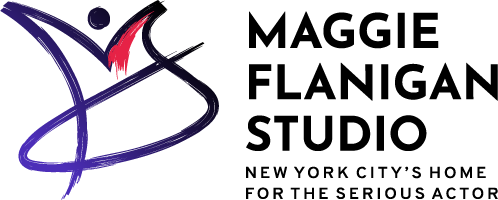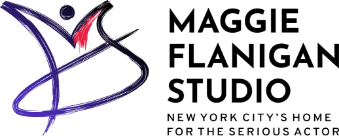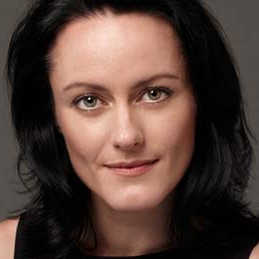Movement 4: A Collaborative Vocabulary
The Maggie Flanigan Studio believes that diverse and well-rounded physical training is essential to an actor’s ability to sustain a vibrant and rigorous career. Movement 4 takes a deep exploration into one of the world’s most popular acting disciplines. After a full year immersed in becoming physically free and capable of releasing into rich, experiential behavior, our students are ready to take on a new challenge. This class moves beyond the Williamson Technique of Movement 1 and 2 in order to provide our students with a broader, collaborative vocabulary.
Physical Performance Tools
The Viewpoints, now taught around the world and used often by directors and actors, is a system of physical performance tools, which evolved from postmodern dance. This technique was first articulated by dancer and choreographer, Mary Overlie, who took the two main elements used in stage performance, – time and space – and broke them down into six categories: space, shape, time, emotion, movement and story. She used them as a structure for dance improvisations. These six Viewpoints were deconstructed further by theater directors Anne Bogart and Tina Landau, who looked at the work through the lens of the actor. Bogart and Landau articulated nine Viewpoints, which when studied and applied are used to form the basis of physical improvisations, and as a way to create strong and dynamic stage moments. A powerful ensemble building tool, The Viewpoints give a performer an awareness of the power of their physical expression, an understanding of how to approach physical characterization, and the tools to simultaneously be performer and choreographer of their own physical score.
A Method to Practice Spontaneity
Acting class is simply not enough for anyone considering a serious professional career. We believe that great actors create vivid, rich behavior, and are capable of channeling their imagination into exciting, dynamic work. We also want our students to possess the ability to collaborate with other actors and directors who work and rehearse with a broad range of disciplines. Ann Bogart has said that The Viewpoints “is essentially a method to practice spontaneity.” The Meisner Technique is rooted in the belief that good acting begins with the ability to be on your spontaneous impulses and out of your head.

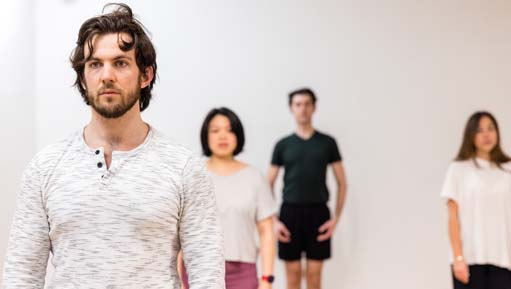
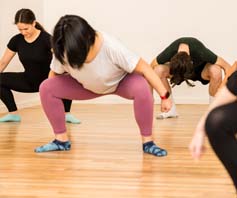
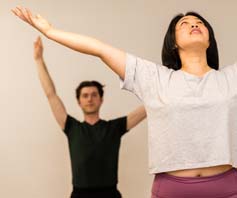
Mastering the Instrument
This movement class for actors is the culmination of the physical training at the Maggie Flanigan Studio We believe strongly that our four semester movement progression, when taken simultaneously with Acting 1 and Acting 2, provides the greatest opportunity for students to begin mastering their instrument.
Movement 4 is a 12-week course with 24 classes.
Learn more about the studio programs.
TINA MITCHELL
Tina has worked internationally as a Teaching Artist in New York, Australia and Colombia. Her extensive training covers a wide range of acting techniques including Stanislavski, Meisner, Yat Malmgren’s approach to Laban Movement Psychology and Character Analysis, Uta Hagen, The Suzuki Method of Actor Training and Viewpoints.
STUDENT TESTIMONIALS
“Prior to starting any of the movement work I was unaware of how my body was holding me back. Now I’m aware of where I’m holding tension and what tools I can use to provide ease. I attribute my contiuned growth in the acting class to the movements class!”

